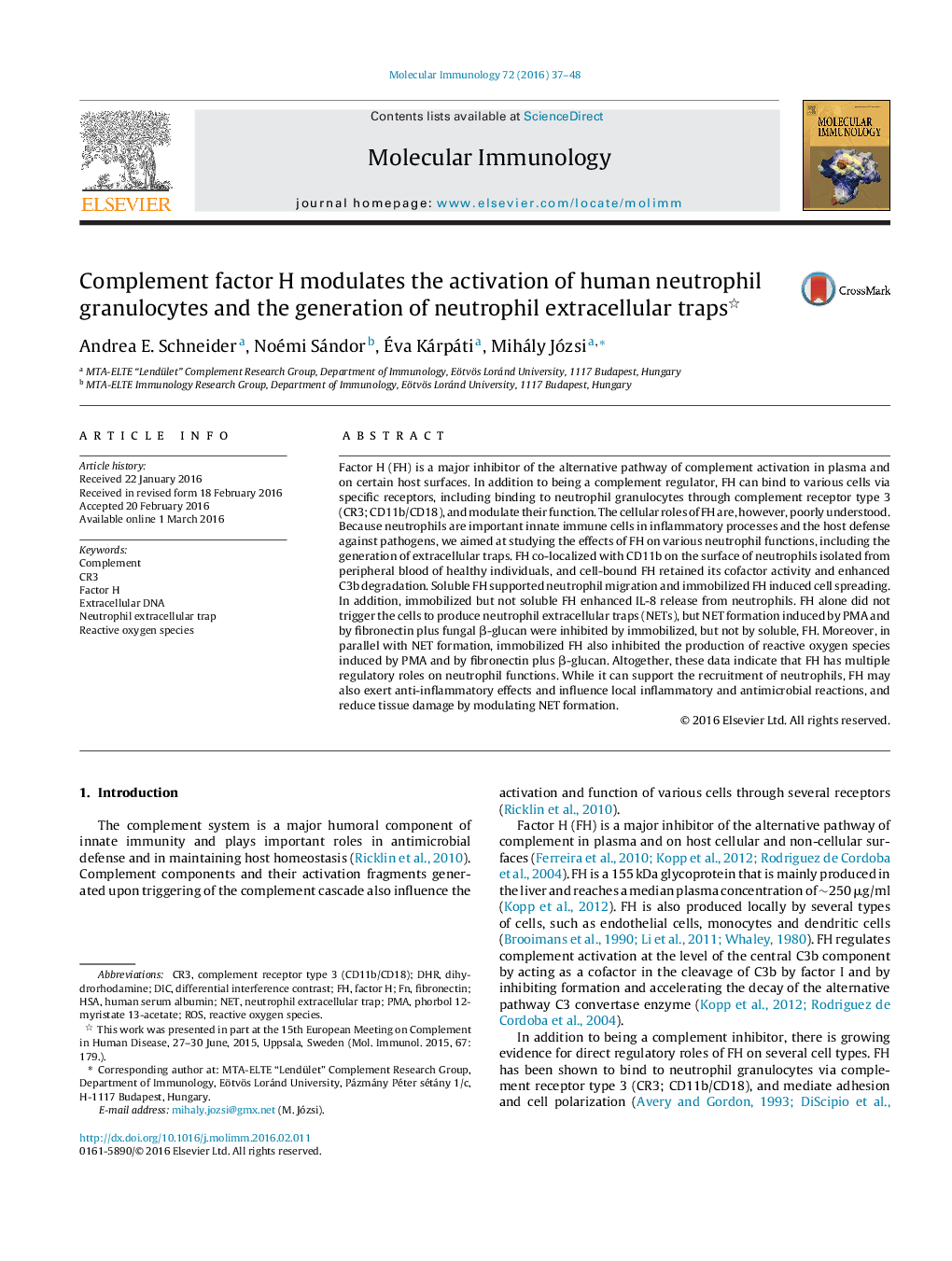| Article ID | Journal | Published Year | Pages | File Type |
|---|---|---|---|---|
| 2830567 | Molecular Immunology | 2016 | 12 Pages |
•Complement factor H co-localizes with CD11b on human neutrophil granulocytes.•Factor H supports neutrophil migration and spreading, and enhances IL-8 release.•Factor H inhibits PMA- and fibronectin plus β-glucan induced NET formation.•Factor H inhibits PMA- and fibronectin plus β-glucan induced ROS production.
Factor H (FH) is a major inhibitor of the alternative pathway of complement activation in plasma and on certain host surfaces. In addition to being a complement regulator, FH can bind to various cells via specific receptors, including binding to neutrophil granulocytes through complement receptor type 3 (CR3; CD11b/CD18), and modulate their function. The cellular roles of FH are, however, poorly understood. Because neutrophils are important innate immune cells in inflammatory processes and the host defense against pathogens, we aimed at studying the effects of FH on various neutrophil functions, including the generation of extracellular traps. FH co-localized with CD11b on the surface of neutrophils isolated from peripheral blood of healthy individuals, and cell-bound FH retained its cofactor activity and enhanced C3b degradation. Soluble FH supported neutrophil migration and immobilized FH induced cell spreading. In addition, immobilized but not soluble FH enhanced IL-8 release from neutrophils. FH alone did not trigger the cells to produce neutrophil extracellular traps (NETs), but NET formation induced by PMA and by fibronectin plus fungal β-glucan were inhibited by immobilized, but not by soluble, FH. Moreover, in parallel with NET formation, immobilized FH also inhibited the production of reactive oxygen species induced by PMA and by fibronectin plus β-glucan. Altogether, these data indicate that FH has multiple regulatory roles on neutrophil functions. While it can support the recruitment of neutrophils, FH may also exert anti-inflammatory effects and influence local inflammatory and antimicrobial reactions, and reduce tissue damage by modulating NET formation.
